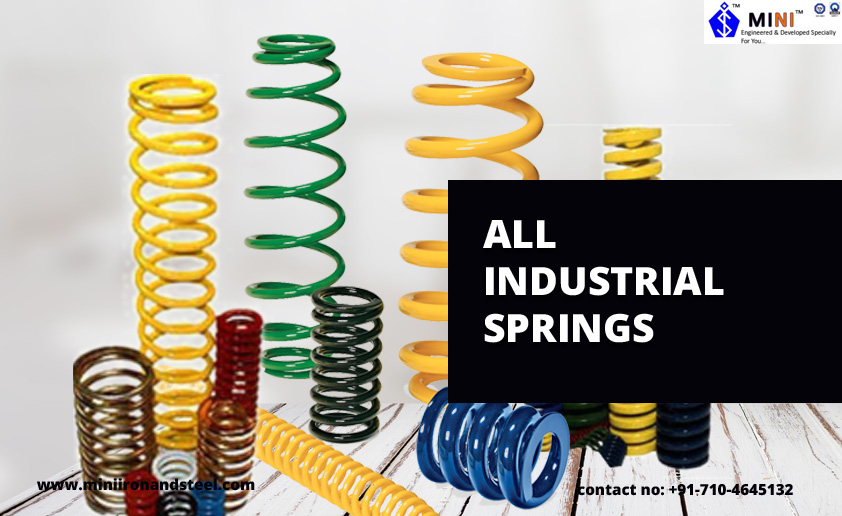A brief know-how about Compression Springs
Compression spring comes with different shapes, sizes, designs and material. These springs handle demanding jobs. The features of compression spring make them unique and so is used for many of the applications. Compression springs have the benefits of space, weight, durability and manufacturing is also hassle free and so most of the equipment’s have the requirement of compression spring.
Why compression spring is considered for many of the applications:
Can resist the movement of another component
Returns the component to the desired position
Provides consistent pressure
Stores and releases energy
The different types of compression springs are:
Conical or Tapered springs: The diameter of the coil in the spring decreases from one end to the other. These springs are used in applications where there is not enough room for a cylindrical spring. They are made in such a way that the smaller coils contracts into the larger coils at the time of compression and so the spring consumes less space.
Barrel or convex springs: The shape of the spring is made in such a way, that ends are smaller than the middle part. They have an advantage of being symmetrical. It helps to keep the compression spring centered, if its fitted around a smaller diameter shaft and also helps for automatic assembly.
Hourglass springs: The spring is tapered so that the ends are larger than the middle. It has the same advantages and features as the barrel spring, except that the coils can be better fitted around the larger diameter hole for keeping the compression spring centered.
Variable Pitch Springs: These springs are coiled between the coils with a variable space. This technique is generally used in order to add closed coils in the center of a spring to reduce tangling and produce springs with a non-linear load versus deflection curve.
Preset Springs: Springs that are required to operate at a stress level exceeding the elastic limit of the material can be “preset” by compressing the spring to a height. The process has the ability to remove any permanent deformation as it exceeds the elastic limit.




Comments
Post a Comment